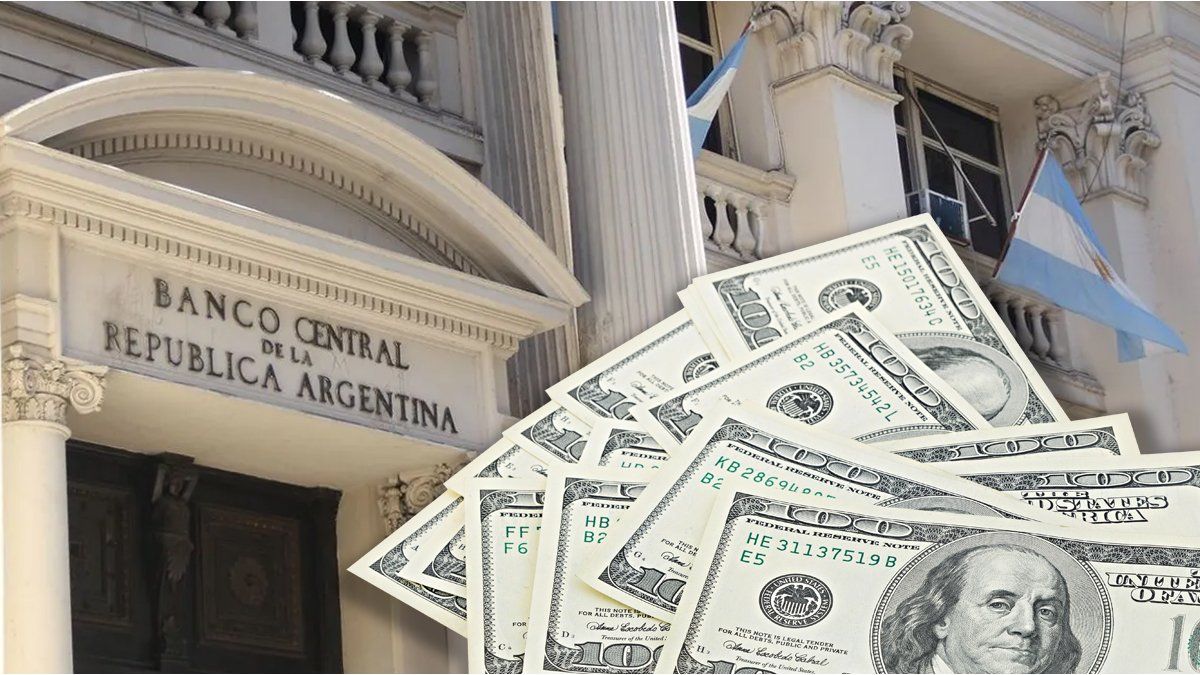The outlook for reserves is discouraging for the coming months. On Monday, the Central Bank (BCRA) sold US$124 million in net terms, which meant the biggest loss since June 19.
In this context, the gross reserves fell US$175 million to reach the US$27.132 millionhis lowest level since February 29. According to a report prepared by Personal Investment Portfolio (PPI), the outlook is not likely to improve in today’s and tomorrow’s trading sessions, the last of the month, since the BCRA is usually a net seller in the last trading sessions.
What variables hinder the accumulation of reserves?
1. Private demand: the BCRA moved to a position of net seller of reserves. According to PPI, the BCRA’s bad streak would be explained by a private demand at record levels in the Milei era, which reached, on average, US$293 million per day in the last three rounds. The access of corporations and provinces for the payment of interest and capital of their bonds for US$153 million between Wednesday and Friday would be behind the official sales for more than US$130 million.
2. Imports: There is a 100% flow of imports accessing the official market, even though this access is not immediate. For PPI, imports are being paid in four installments of 25% running at a time.
3. The intervention in the CCL: according to PPI calculations, US$253/US$261 million were allocated to keep the CCL in check in the last ten rounds, compressing the gap from 53.7% to 41.3% in this period.
On the other hand, although the Government wants the market to focus on the Treasury, according to the latest report from the Central Bank, the National Treasury made direct purchases from the BCRA for US$212 million in June.
ppi1.png
Bookings: What is the outlook for the next rounds?
“Forward, Your performance should get worsesince the seasonality of imports and exports will continue to play against the accumulation of reserves. It should be remembered that, in years with restrictions, reserves are usually sold in the third quarter. By having made access to the official market more flexible for more than 60% of imports, greater pressure was added between September and November, when there will be a flow of more than 100% of imports accessing (quotas of the previous scheme overlap with the new one)”, PPI analyzed.
“In a context in which there is no longer surplus flow for the BCRA to buy, its sales would be increasingly greater if supply does not increase in line with demand. The million-dollar question is why the BCRA returns more “The official market dynamics are unfavourable for itself. While easing access for importers is a measure supported by the IMF, it would entail a risk for net reserves. Is there an ace up its sleeve that will not leave it in such an uncomfortable position?” concluded PPI in its outlook report.
Luis Caputo’s plan: reservations and an end to the restrictions?
According to the latest LCG report, the flow of dollars will become more “tense” in the MULC as it will imply a greater use of reserves but, in return, less tension in the CCL.
In this sense, for LCG “using the few dollars they have to lower the CCL is not a good idea” because it validates an exchange rate delay at a time when they need dollars to pay debt and imports.
“Thus, the idea flourished that lowering the parallel dollar quickly to a value close to the import or export dollar would lift the exchange rate restriction without a jump in exchange rates. Making a great effort in terms of reserves to reach those values can be risky if, once the restriction is lifted, the Government is left without weapons to defend those parities that the market today considers low,” he warned.
What is the government relying on to weather the reserve situation? the laundering. The proceeds from money laundering would represent 0.3% of GDP and would give the Government room to manoeuvre in fiscal matters in a context where sustain the surplus in the coming months It will be somewhat more complex due to the delays in payments to CAMMESA, in a context of seasonally more deficits in the winter due to energy payments, added to the fact that the removal of subsidies has not yet been completed.
However, the financial surplus in the first half of the year also gives the economic team some breathing room. Economists consulted by this newspaper maintain that the Government would be able to maintain a balance in public accounts and meet the IMF target, with a greater adjustment on the expenditure side.
It is expected that the money laundering will be paid by September, due to the incentive of the 5% rate. Until that month, which lasts the winter, the Government would have this exceptional income in the national finances and with the advance of personal assets to compensate for the expenditures from public accounts.
Source: Ambito




